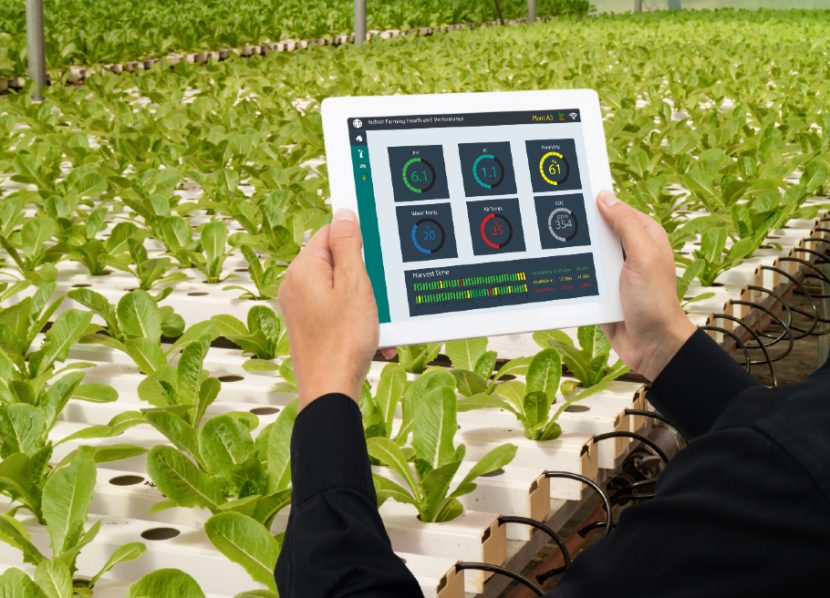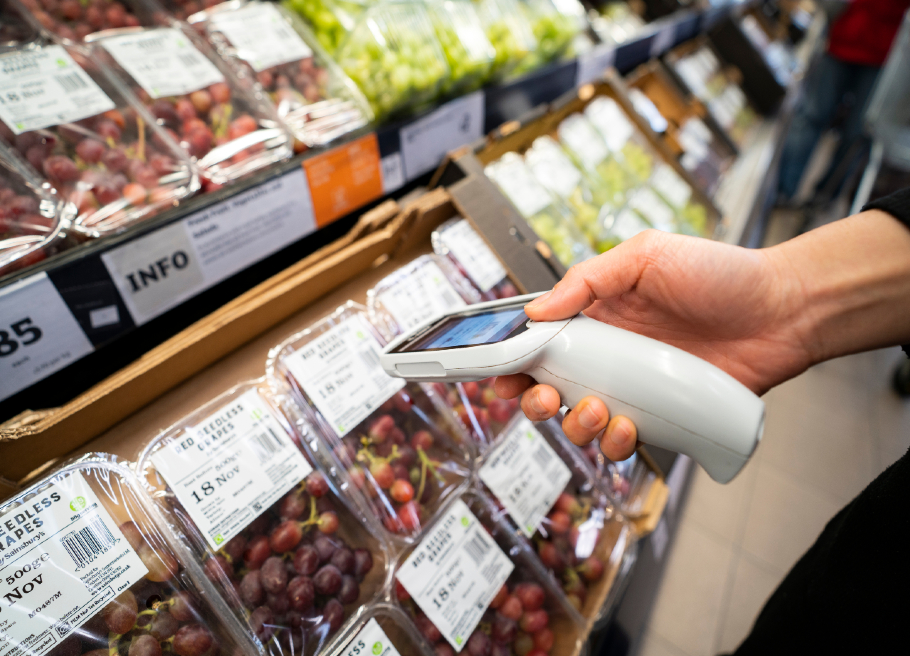How the Internet of Things (IoT) Improves Food Traceability
By Emily Newton
Internet of Things (IoT) technology has helped people gain visibility over everything from patient vital signs to the environmental characteristics of tightly regulated manufacturing plants. People are also interested in how connected sensors could improve food traceability.
Many consumers have become choosier about the origins of their food. They want assurances that food products come from come from companies committed to sustainability, human rights and high quality. Since IoT sensors can gather continuous data, they help with the necessary verification processes. Here are some specific ways to apply the IoT when tracking consumables.
Reduce Food Waste Through Better Visibility
Wasted food represents a problem that raises costs and C02 emissions. However, a project called REAMIT (Improving Resource Efficiency of Agribusiness Supply Chains by Minimizing Waste Using Big Data and Internet of Things Sensors) aims to use technology for real-time food monitoring that tackles this issue. This is a €4.88 million project with several participating countries.
One of the experimental cases to improve food traceability involved putting sensors in the freezers at a production facility that makes authentic African meals where the foods stay within the required thresholds for quality and safety. In another instance, sensors tracked the movement of donor breast milk, providing temperature and humidity data tracking by time and location every two minutes.
Elsewhere, a Northern Ireland food company put sensors in its delivery vans to track temperature fluctuations caused by the frequent opening of doors. Chilled food must stay below 40 degrees Fahrenheit during shipping to remain safe. The sensors ensure the company meets that condition by sending real-time text alerts about sustained temperature-related issues.
One of the ever-present challenges of the food supply chain is that products often pass through so many companies and hands before reaching their destinations.
Professor Ramakrishnan Ramanathan — a REAMIT project lead at the University of Essex — said: “Food waste results in several adverse economic, environmental and social impacts. Saving food from becoming waste will help avoid these impacts. The REAMIT project has demonstrated that food waste can be saved very cost-effectively using technology. Further, the REAMIT project showcased that the power of big data and analytics need not only be applied to support private companies but can also be applied for social causes too.”
Improve Food Traceability and Supplier Trust
One of the ever-present challenges of the food supply chain is that products often pass through so many companies and hands before reaching their destinations. Each person that handles the food must maintain stringent standards to ensure products don’t spoil or become damaged in transit. IoT sensors can provide the necessary visibility and warn the appropriate parties if specific suppliers don’t follow quality-control standards.
That’s the goal of Seattle startup Transparent Path, which focuses on better visibility for perishable goods. The technology provides real-time information about location, temperature and humidity, allowing food company representatives to be more proactive if things go unexpectedly while products are in transit. Predictive algorithms also give each food package a freshness score, estimating the likelihood of consumables spoiling during transit.
The company charges a fee per package. Company CEO Eric Weaver explains how his company can improve food traceability, saying, “Think of it as travel insurance you might buy when you purchase a plane ticket online. For an extra amount, you can get so much more data than you ever had before. Is [the food] being kept cold-chain compliant like the truck driver or warehouse swears it is?”
Weaver explained that data value is a major selling point of Transparent Path’s sensors. Suppose a company has reliable information about its food in transit. Then, it can gather information about which suppliers are most reliable and trustworthy, providing evidence to support continuing relationships with those standout partners. Conversely, if supply chain partners repeatedly fall short of the mark, IoT sensor data can improve food traceability by flagging which suppliers have the most urgent need for improvement.
Trace Food From Farm to Distribution Center
Foodborne illnesses are a significant problem causing concern among consumers and food producers. Experts agree there’s no single solution for addressing the matter, but that better visibility about what happens to food in each production phase would help. For example, specific temperatures can either inhibit or promote the spread of contamination from affected foods.
Coles is an Australian supermarket chain using the IoT to improve food traceability with smart food bins. That change came about because the brand suffered substantial losses and damages due to mishaps during transit. However, the connected food bins track what happens as poultry moves from farms to distribution centers.
Larry Kavanagh is the general manager of national meat processing at Coles. He explains, “The smart food bins ensure that we can track the poultry from the moment they are loaded by our suppliers at farms right through to the time they reach our distribution center. This reinforces our food safety standards while saving time and minimizing waste.”
Leaders at Coles receive alerts about bins being in unusual locations or receiving shocks. Such events suggest the containers may have gotten lost, dropped or otherwise mishandled. These bins are also reusable, so the more closely Coles employees can track them, the higher the chance they’ll get them back in good condition for the next trip.
The IoT Can Improve Food Traceability in Many Ways
These are just some of the possible applications that help people verify what happens to food as it makes its journey to the last stop. As more decision-makers explore how to use the IoT to trace consumables, you’ll almost certainly see additional creative and practical use cases that utilize the IoT to minimize unexpected events associated with foods on the move.
About the author:
Emily Newton is the Editor-in-Chief of Revolutionized Magazine. She has over six years of experience writing for the food and beverage industry.

-
 FeaturedRisk management
The Cost of a Breach: What a Cyberattack Could Mean for Food Safety Recalls
FeaturedRisk management
The Cost of a Breach: What a Cyberattack Could Mean for Food Safety Recalls
-
 FeaturedRisk management
Securing the Food Chain: How ISO/IEC 27001 Strengthens Cybersecurity
FeaturedRisk management
Securing the Food Chain: How ISO/IEC 27001 Strengthens Cybersecurity
-
 FeaturedRisk management
Revolutionizing Food Safety Training: Breaking Out of the “Check-the-Box” Mentality
FeaturedRisk management
Revolutionizing Food Safety Training: Breaking Out of the “Check-the-Box” Mentality
-
 GFSI Standards
GFSI 2025: Building Trust, Tech-Forward Solutions, and Global Unity in Food Safety
GFSI Standards
GFSI 2025: Building Trust, Tech-Forward Solutions, and Global Unity in Food Safety
-
 FeaturedFood Safety
Integrated Pest Management: Strategies to Protect Your Brand’s Reputation
FeaturedFood Safety
Integrated Pest Management: Strategies to Protect Your Brand’s Reputation
-
 FeaturedFood Safety Culture & Training
No Open Door Policy: Challenges That Impact Pest Control in Food Processing Plants
FeaturedFood Safety Culture & Training
No Open Door Policy: Challenges That Impact Pest Control in Food Processing Plants




